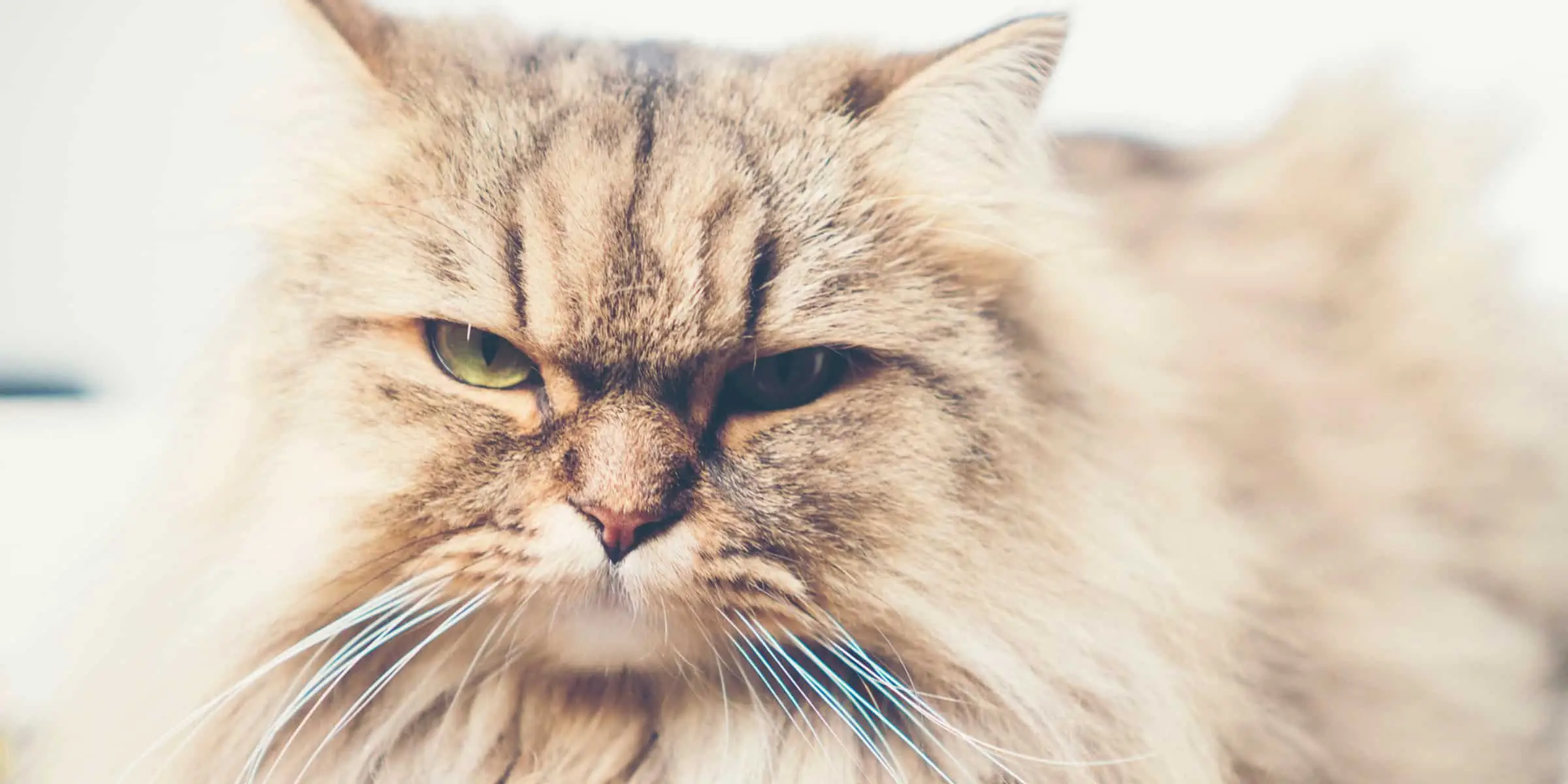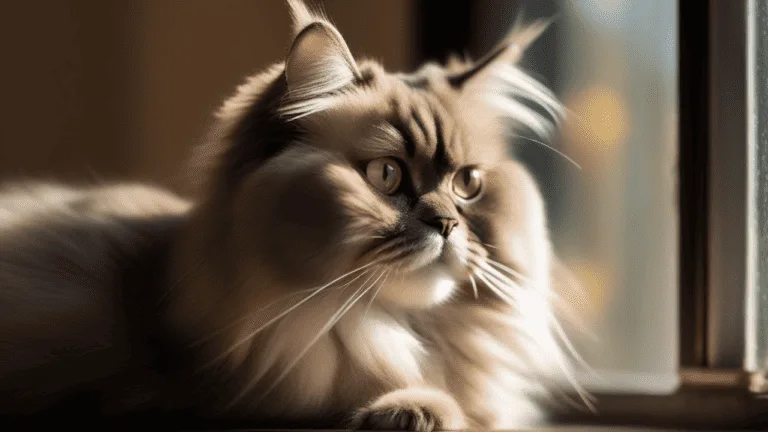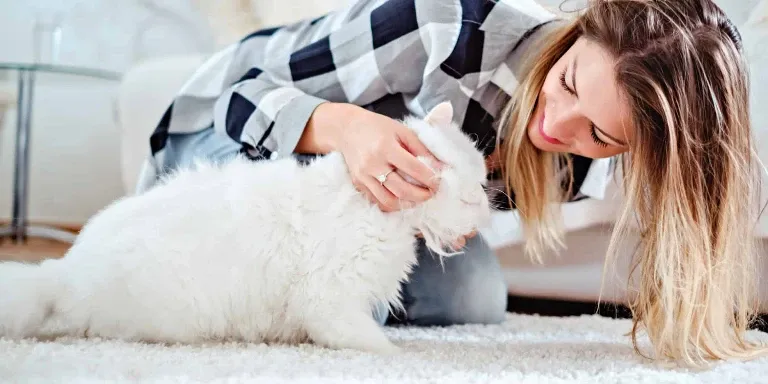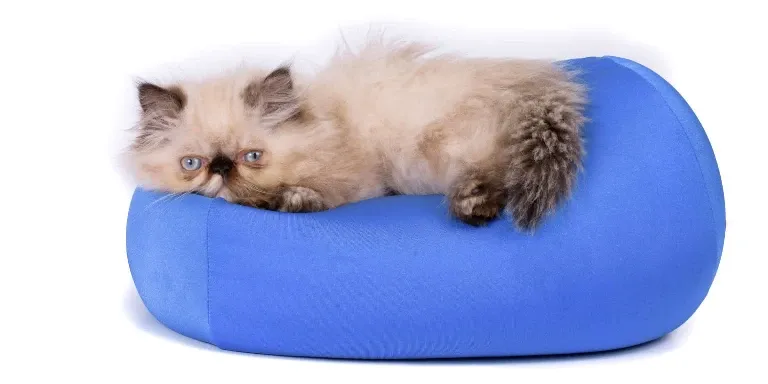The Best Fluffy Pancakes recipe you will fall in love with. Full of tips and tricks to help you make the best pancakes.

Do you often wonder if your Persian cat has feelings? As a responsible pet owner, it’s natural to want to understand your furry companion better.
Persian cats have feelings just like any other living being. They can experience a range of emotions such as happiness, sadness, fear, and anger. They can also form attachments to their owners and show affection towards them. It is important to provide them with love and care to promote their emotional wellbeing.
While cats have a reputation for being aloof and independent, they are intelligent creatures with complex emotions. In this article, we will explore the emotional capacity of Persian cats and debunk the myth of their aloofness.
As one of the most popular cat breeds worldwide, Persian cats are known for their luxurious coats and sweet temperaments. However, many people assume that their calm demeanor means they lack the capacity for emotions. In reality, Persian cats are highly sensitive animals who experience a range of emotions, including joy, fear, anger, and sadness.
By understanding their emotional needs, you can build a stronger bond with your Persian cat and ensure their well-being. So, let’s dive into the science behind feline emotions and learn how to care for your Persian cat’s emotional health.
The Intelligence and Emotional Capacity of Cats
Cats may seem aloof, but they actually have a surprising level of emotional intelligence, making them capable of forming deep and meaningful bonds with their owners.
Intelligence isn’t just about cognitive abilities, cats also possess instinctual intelligence that helps them navigate their surroundings and respond to threats. They have an innate ability to hunt and catch prey, and their stalking and pouncing behaviors are a result of their natural instincts.
Emotional intelligence, on the other hand, is the ability to recognize emotions in oneself and others, and to respond appropriately. Studies have shown that cats are capable of understanding human emotions and can even mimic them to communicate their own feelings. They can sense when their owners are sad or upset and will often try to comfort them by purring or cuddling.
While cats may not have the same level of cognitive intelligence as dogs, they more than make up for it with their emotional intelligence and their ability to form deep and meaningful bonds with their owners. They are loyal and affectionate companions, and their unique personalities and behaviors make them fascinating creatures to observe and interact with.
So, the next time you interact with your Persian cat, remember that they have a complex range of emotions and are capable of forming deep connections with you.
Debunking the Myth of Aloofness
When it comes to cats, you may have heard the myth that they are aloof and unaffectionate. However, this simply isn’t true.
In fact, many cats are quite affectionate towards their owners and enjoy spending time with them. Additionally, cats are capable of forming strong bonds with other animals, such as dogs or even other cats, and can express a range of emotions.
Affectionate Behavior towards Owners
You’ll notice how affectionate your Persian cat can be towards you as their owner. Despite the stereotype of aloofness, Persian cats are actually quite attached to their owners.
They will often follow you around the house, curl up on your lap, and even sleep on your bed. This behavior is not just a sign of affection, but also a sign of loyalty.
Persian cats have been known to experience signs of jealousy when their owners show attention to other pets or people. They may also experience separation anxiety when their owners leave for extended periods of time.
So, don’t be surprised if your Persian cat seems extra cuddly when you return from a trip. They truly do have feelings and emotions just like any other pet.
Strong Bonds with Other Animals
If you want to witness something truly heartwarming, just observe your Persian cat forming a strong bond with another animal in your home. Despite their reputation for being aloof, Persian cats can form deep bonds with other animals, even those of different species. These inter-species connections are a testament to the innate social nature of these feline companions.
The roots of these strong bonds can be traced back to early socialization. Persian cats that are exposed to other animals from a young age are more likely to form bonds with them later in life. This socialization helps them learn to communicate and interact with other animals in a positive manner, leading to a deeper understanding and connection.
Whether it’s a cuddly hamster or a playful dog, your Persian cat can find a true friend in other animals, proving that even the most independent of felines can form lasting relationships.
Expression of Emotions
As you observe your Persian cat, it becomes evident that their emotions are just as complex and nuanced as any other animal’s.
While they may not express their feelings in the same way as humans, they do communicate through nonverbal cues such as body language, vocalizations, and facial expressions.
For example, a happy Persian cat may purr and knead with their paws, while a frightened or angry cat may hiss, arch their back, and fluff their fur.
Socialization skills also play a role in how Persian cats express their emotions.
These cats are known for their strong bonds with their owners and other animals, and they often seek affection and attention.
However, they may also become anxious or aggressive if they feel threatened or uncomfortable in social situations.
Understanding your Persian cat’s nonverbal communication and socialization skills can help you better interpret their emotions and provide them with the care and attention they need.
Understanding the Persian Cat Breed
When you own a Persian cat, it’s important to understand the unique characteristics of their breed. First and foremost, Persian cats require a significant amount of grooming to maintain their luxurious coat. This means daily brushing and occasional baths to prevent matting and skin irritation. Neglecting their grooming needs can lead to health concerns such as skin infections and respiratory issues.
In addition to their grooming needs, it’s important to be aware of the potential health concerns that are more common in Persian cats. These can include respiratory problems, dental issues, and eye problems such as excessive tearing or corneal ulcers. Regular check-ups with a veterinarian can help catch any potential health issues early on.
Despite their potential health concerns, Persian cats are generally known for their sweet and gentle nature. They are loyal companions and often enjoy curling up in their owner’s lap for a cozy nap.
Understanding the specific needs and characteristics of the Persian cat breed can help ensure a happy and healthy life for your furry friend.
The Science Behind Feline Emotions
As you delve into the science behind feline emotions, you’ll discover that cats share many similarities with humans in terms of how they experience emotions.
They can feel happy, sad, anxious, and even jealous, just like we do.
However, there are also differences in how cats express their emotions compared to humans, which can make it challenging to understand their feelings at times.
Similarities to Human Emotions
You’ll be surprised to know that Persian cats share many similarities with human emotions. Studies have shown that they can experience joy, fear, anger, and even depression.
Here are some ways that Persian cats and humans share emotional similarities:
- Like humans, Persian cats have a strong sense of attachment to their owners and show empathy towards them.
- They can experience anxiety and stress, especially when they’re in unfamiliar or uncomfortable situations.
- Just like humans, Persian cats can experience mood swings and have their own unique personalities.
Persian cats’ emotional intelligence plays a crucial role in their owners’ relationship with them. Understanding their emotions and responding accordingly can help create a stronger bond between the two.
It’s important to remember that while Persian cats may not express their emotions in the same way humans do, they still experience them in their own way.
Differences in Expression
Imagine watching a Persian cat’s face light up with a contented smile, or witnessing the subtle flick of their tail indicating annoyance or curiosity – their expressions may differ from humans, but they’re just as expressive in their own way.
Facial expressions and body language play a crucial role in understanding a Persian cat’s emotions. For example, when a Persian cat’s happy, they may show it by squinting their eyes and purring. On the other hand, when they’re angry or scared, their pupils may dilate, and their ears may flatten against their head.
It’s important to note that while Persian cats may have similar emotions to humans, they may express them differently. For instance, they may not cry tears when they’re sad, but they may hide or become more withdrawn.
Additionally, their body language may be more subtle and nuanced compared to humans. But just because they don’t express their emotions in the same way as us, doesn’t mean they don’t have feelings.
In fact, understanding and recognizing a Persian cat’s expressions and body language can help us better serve and care for them.
How Persian Cats Express Their Feelings
When it comes to expressing their emotions, Persian cats have a variety of methods at their disposal. You can learn a lot about how your Persian cat is feeling by observing their body language, from the position of their ears to the way they hold their tail.
Additionally, Persian cats are known for their vocalizations, which can range from purring to meowing to hissing depending on their mood.
Finally, playful behavior can also be a sign of a happy and content Persian cat, as they love to engage with toys and interact with their owners.
Body Language
As a Persian cat owner, you may be wondering how you can better understand your furry friend’s emotions. One way to do this is by paying close attention to their body language. Persian cats, like many other animals, use nonverbal cues to communicate their feelings, and interpreting these cues can help you better understand your pet.
Here are some common body language cues to look out for in Persian cats:
- Tail position: If your cat’s tail is raised, it usually means they’re happy and content. If it’s tucked between their legs, they may be scared or anxious.
- Ears: If your cat’s ears are upright and facing forward, they’re likely alert and interested in their surroundings. If they’re flattened against their head, they may be feeling threatened or angry.
- Purring: While not technically body language, purring is a common sign of contentment in cats. If your Persian cat is purring while snuggling with you, they’re likely feeling happy and relaxed.
- Eye contact: If your cat is making direct eye contact with you, it usually means they’re feeling confident and relaxed. If they avoid eye contact or have dilated pupils, they may be feeling anxious or scared.
By paying attention to these body language cues, you can better understand your Persian cat’s emotions and provide them with the care and attention they need.
Vocalizations
Understanding your furry friend’s vocalizations is key to communicating with them effectively and meeting their needs.
Persian cats are known to be quite vocal and expressive, using a variety of meows and purrs to convey their emotions and desires. As a pet parent, it’s important to learn to interpret these sounds to better understand what your cat is trying to tell you.
Meowing is one of the most common forms of communication for Persian cats. They may meow to greet you when you come home, ask for food or water, or even to express their displeasure. However, not all meows are created equal.
A high-pitched meow may indicate excitement or happiness, while a low, drawn-out meow may mean your cat is feeling lonely or anxious. By paying attention to your cat’s vocalizations and body language, you can become more attuned to their needs and provide them with the love and care they deserve.
Playful Behavior
Get ready to have some fun with your playful Persian pal! Interactive playtime is an essential part of your cat’s daily routine.
Persians are known for their playful nature and love to interact with their owners. As a responsible pet owner, it’s important to provide your Persian cat with interactive playtime every day.
Interactive playtime provides an opportunity for your Persian cat to engage in physical activity that promotes good health. It also helps to keep your cat mentally stimulated, which is important for their overall well-being.
Socialization is another important aspect of interactive playtime. By interacting with your cat during playtime, you’re teaching them important social skills that will help them interact with other animals and humans.
So, get ready to have some fun with your Persian cat and enjoy the benefits of interactive playtime!
Common Emotional States in Persian Cats
You’ll notice that Persian cats can display a range of common emotional states, such as affection, playfulness, and contentment. Understanding these emotional states can help you better care for and connect with your feline companion.
Here are some common emotional states you may observe in your Persian cat:
- Affection: Persian cats are known to be affectionate creatures, often seeking out attention and physical contact with their owners. They may purr, rub against you, or knead with their paws to show their love. Pay attention to your cat’s body language and behavioral cues to know when they are seeking affection.
- Playfulness: Persian cats may also display playful behavior, such as chasing toys or even your feet. They enjoy interactive play and may even initiate play on their own. Providing your cat with toys and regular playtime can help keep them mentally stimulated and happy.
- Contentment: When Persian cats are content, they may show signs of relaxation and comfort. This can include purring, slow blinking, and even sleeping in your lap. Socialization techniques, such as spending regular quality time with your cat and providing them with a comfortable and safe environment, can help promote feelings of contentment.
- Anxiety and stress: While Persian cats can display positive emotional states, they can also experience anxiety and stress. This can be caused by a variety of factors, such as changes in their environment or routine. Signs of anxiety and stress in Persian cats can include hiding, excessive grooming, and aggression. It’s important to address any potential sources of stress and provide your cat with a calm and secure environment.
Caring for Your Persian Cat’s Emotional Well-Being
Wow, taking care of your Persian cat’s emotional well-being is absolutely essential if you want a happy and healthy companion!
One of the most important aspects of caring for your cat’s emotional health is understanding anxiety. Persian cats can be prone to anxiety, which can manifest in a variety of ways, including hiding, excessive grooming, and even aggression.
To help your Persian cat manage anxiety, it’s important to create a calm and predictable environment. This can include providing plenty of hiding places, using pheromone diffusers, and keeping a consistent routine. It’s also important to provide your cat with plenty of opportunities for play and exercise, as this can help reduce stress and anxiety.
Another crucial aspect of caring for your Persian cat’s emotional well-being is socialization. Persian cats can be prone to shyness and social anxiety, so it’s important to expose them to new people, animals, and environments from a young age. This can help them develop confidence and feel more comfortable in a variety of situations.
By taking the time to understand your Persian cat’s emotional needs and providing them with the appropriate care and socialization, you can help ensure that they lead a happy and fulfilling life.
Do Persian Cats Express Their Feelings Through Their Attitude?
Persian cats are known for their regal and aloof attitude. However, they can also be quite affectionate and expressive. Through their body language and vocalizations, the attitude of Persian cats can convey a range of emotions such as contentment, playfulness, and even irritation.
Conclusion
You now understand that Persian cats not only have feelings, but they also have the capacity for complex emotions. Despite their reputation for aloofness, they’re intelligent and sensitive creatures that require love, attention, and emotional support from their human companions.
By understanding their breed-specific traits and behaviors, you can better recognize and respond to your Persian cat’s emotional needs. Remember that cats communicate their emotions differently than humans, so it’s important to pay attention to their body language and behaviors. Whether they’re feeling happy, anxious, or stressed, they may exhibit certain signs that indicate their emotional state.
By providing a safe and loving home environment and meeting their physical and emotional needs, you can ensure that your Persian cat lives a happy and fulfilling life. As the saying goes, “a happy cat is a healthy cat.”








